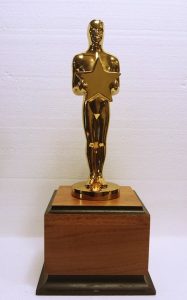Alright, party people! Time to get this wagon train a movin’. So we start off our journey with the first picture to win Best Engineering Effects. This category would later be reworked into the more familiar sounding Best Visual Effects, which in my opinion does more accurately portray precisely what the category represents. Wings, which also won Outstanding Picture, a precursor to the Best Picture category, that year, is most deserving of this award. There are films that push the limit of what the movie camera can do and this is one of them.
Wings was and still remains groundbreaking in how they filmed the aerial sequences. Actors had to learn to fly their own planes while cameras were strapped to the front of them so they could capture close-ups. In other scenes, the director pretty much handed everyone a camera, and told them film whatever they could during the dogfight scenes. Such technical work at filming scenes in the air had never been done before and the detailed work shows through the entire film. One critic even thought the footage had been shot during the actual war, so accurate to the technical details it was. I really can’t impress how amazing it is to watch such complicated aerial work be done, knowing there’s no CGI or green screen, only a lot of very talented stunt performers actually spiraling planes down to crash right onto the ground.
While the story might be a bit slight and cliche, even for the day, (typical girl loves boy who loves other girl who loves other boy standard fare) the scenes set in the air never fail to impress, even at a view 92 years later. The other effects in the film, such as showing a translucent battle scene over the sky while the bottom half is occupied by marching soldiers, is something that silent films had advanced to very well, and that would unfortunately be ground to a halt as filmmakers had to work with the at-first clunky sound equipment for talkies. Also overlooked is the scene in Paris where an inebriated soldier keeps imagining bubbles everywhere. The bubbles appeared to have been shot separately and then added in later on, a practical effect that again would take a long time for talking pictures to reproduce.
In the category of visual effects, Wings certainly deserves that honor. Was it worthy of the Outstanding Picture category, or like many of its later contemporaries, was it simply a popular puff piece that won because audiences saw it the most? Will the story line and acting hold up to the test of time to a viewing 92 years later? Tune in later and we’ll find out!
